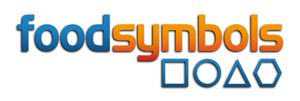International allergen labeling
The labeling of allergens in food is an important issue worldwide to protect the health of allergy sufferers. Many countries have enacted legal regulations for this, but there are also differences in the requirements. This article compares the situation in different regions of the world.
European Union
In the EU, the Food Information Regulation (FIR) has uniformly regulated since 2014 that 14 major allergens such as cereals containing gluten, crustaceans, eggs, fish, peanuts, soy, milk, nuts, celery, mustard, sesame seeds, sulfur dioxide and sulphites, lupins and mollusks must be highlighted in the list of ingredients if they are contained as an ingredient. For loose goods, the information must also be provided.
USA
In the USA, the Food Allergen Labeling and Consumer Protection Act (FALCPA) of 2004 requires that the major allergens milk, eggs, fish, crustaceans, tree nuts, peanuts, wheat and soy must be listed on the label. From 2023, sesame will be added as the 9th major allergen. The allergens can either be listed in parentheses after the respective ingredient or at the end of the ingredient list after "Contains".
Canada
Canada requires, according to the Food and Drug Regulations Act, the declaration of the priority allergens eggs, milk, mustard, peanuts, tree nuts, seafood, sesame, soy, sulfur dioxide, wheat and sulphites either in the ingredient list or in a separate "Contains" statement using the commonly used name of the allergen.
China
In China, the national standard GB 7718 regulates the labeling of wheat, nuts, eggs, peanuts, soybeans, milk, crustaceans, fish and mollusks in the list of ingredients as well as by an additional warning on the packaging.
Japan
Japan's Food Labelling Act mandates the labeling of 7 allergens such as egg, milk, wheat, buckwheat, peanuts, crustaceans and nuts. 21 other allergens should be voluntarily indicated.
Russia
The GOST R 51074-2003 standard in Russia requires the declaration of peanuts, nuts, sesame, soy, milk, eggs, fish, crustaceans, wheat, celery, mustard and sulphites in the list of ingredients as well as by the indication "Contains: (list of allergens)" on the packaging.
Other regions
In Latin America, some countries such as Argentina, Brazil, Colombia, Chile and Mexico have regulations on allergen labeling, which are mostly based on the Codex Alimentarius guidelines. Other states such as Bolivia, the Dominican Republic, Haiti, Honduras, Panama, Paraguay, Peru and Uruguay have not yet enacted corresponding laws.
Also in many developing countries in Africa and Asia, there are so far no or only rudimentary regulations on allergen labeling. Especially for travelers with allergies, this can be a challenge.
Overall, it shows that allergen labeling is regulated similarly but not uniformly internationally. For food manufacturers and allergy sufferers, it is therefore important to familiarize themselves with the specific requirements of the respective country. A worldwide harmonization of standards would be desirable to offer allergy sufferers better protection everywhere. Until then, in many regions it remains the responsibility of the individual to inform themselves about ingredients and to be careful.

